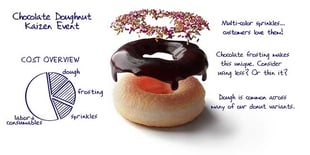DfM, DfA & DfMA: 3 Processes Every OEM Needs to Know

Written by Hans Dittmar
In today’s competitive landscape, contract manufacturers (CMs) need to do more than just fill orders that meet product specs. Top-tier CMs work with their OEM partners to ensure that everyone is on the same page
and aligned to produce the best outcomes — from the engineers and designers to materials specialists and those working on the shop floor.
Opportunities for improving a final product abound, but it requires a DfMA approach — a combination of Design for Manufacturing (DfM) and Design for Assembly (DfA). How are the processes related and how do they differ? More importantly, how can deploying a DfMA philosophy get you the results you need?
To answer these questions, our short video explores the interrelationships and differences between:
- Design for Assembly (DfA)
- Design for Manufacturing (DfM)
- Design for Manufacturing and Assembly (DfMA)
It’s critical to examine a product prior to and during manufacturing to look for opportunities for improvement. These improvements are often put into two buckets: Design for Assembly (DfA) and Design for Manufacturing (DfM).
The processes share several attributes, but there is also some difference between DfA and DfM. The nuances are best defined by understanding the fundamentals.
What is DfA?
Design for Assembly (DfA) revolves around simplifying the product structure, focusing on:
- Reducing the number of required product parts, thereby making assembly more efficient
- Increasing ease of assembly by using keyed parts or components that can only go together in a certain orientation
- Ensuring ease of handling during assembly by measuring part size, weight, ease of dispensing, fragility, and flexibility
What is DfM?
Design for Manufacturing (DfM) -- also commonly referred to as Design for Manufacturability -- concentrates on minimizing the complexity of manufacturing process operations by:
- Determining the cost of fabricating individual components
- Reducing machined component features to control production costs, increase quality and assembly time efficiencies, and improve DfA outcomes
Like DfA, the DfM process works to optimize product development, ensure smooth prototyping, and maximize ease of manufacturing.
What is DfMA?
Using DfA and DfM in tandem forms the basis of Design for Manufacturing and Assembly (DfMA).
In simplest terms, DfMA is a set of guidelines for ensuring that a product is designed and revised so that it can be efficiently manufactured and assembled. It also has a positive effect on product quality.
DfMA facilitates dialogue and teamwork between designers and the manufacturing engineers. Leveraging concurrent engineering lowers product costs, increases product reliability, and shortens time to market.
Other advantages of DfMA include:
- Incorporating a modular design
- Favoring standard parts over custom parts
- Designing parts that are multi-functional and economical to fabricate
- Eliminating fasteners, etc., that reduce component cost and manufacturing time
With the wealth of benefits of DfMA, it’s critical that you engage a contract manufacturer that understands the value of these philosophies and incorporates them into its standard processes.
Whether you plan to transfer a build-to-print or have engaged a manufacturer early in pre-production, the long-term value of DfMA activities impacts the complete product lifecycle.
Choosing a supplier with an active DfMA culture such as GMI Solutions makes things easier, faster, and less expensive. We proudly serve as a trusted contract manufacturer and true partner in improving your products and your bottom line. Explore more in Outsourcing: The OEM's Guide to Selecting a Contract Manufacturer. Click the button below to download your copy of this valuable guide.





